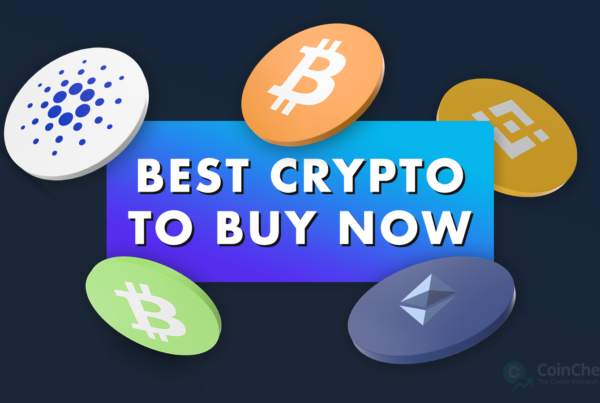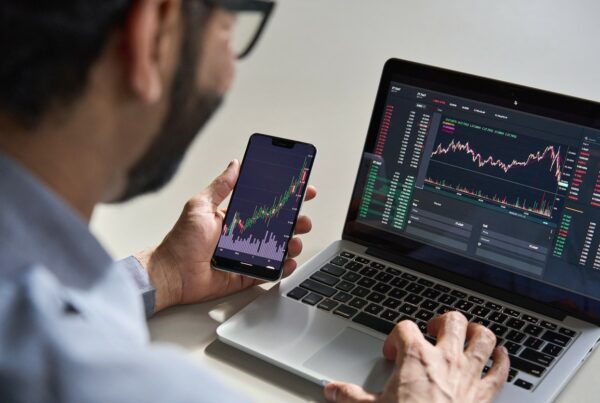Following two weeks of stagnation in terms of the end-of-week total crypto market capitalization, it now seems that investors have slowly started to increase their crypto stakes. This week, the total market capitalization has climbed from $1.77 trillion to $1.92 trillion. It is still less than 10%, but who are we to complain? Biggest weekly gainers were Ethereum Classic (ETC), THORChain (RUNE), Aave (AAVE), Mina Protocol (MINA) and Avalanche (AVAX), which all appreciated by more than 20%. The sector’s benchmark, Bitcoin, is also up by almost 7% in the past week. Let’s hope for a continuation of this trend in the Week 12.

3. ApeCoin (APE)
ApeCoin is a new ERC-20 token that was recently launched by the ApeCoin DAO. The total supply of APE stands at 1 billion tokens, our of which 150 million tokens (15%) can be claimed by holders of the NFTs from the popular Bored Ape Yacht Club (BAYC) and Mutant Ape Yacht Club (MAYC) collections. Another 16% of the ApeCoin supply has been allocated to Yuga Labs, the company behind BAYC and another 8% will remain in the hands of the four Yuga Labs founders. 14% of the total supply will be gifted to “launch contributors”. The remainder will be held in the ApeCoin DAO treasury. The tokens will be issued gradually over the period of four years. Besides being a decentralized currency that facilitates monetary transactions, APE will have a few additional use cases, including granting its holders governance rights in the ApeCoin DAO and providing access to exclusive events and services.
APE rallied from $1 to almost $18 in the first 24 hours of trading
ApeCoin started trading on several centralized exchanges on March 17. While the first recorded price of APE was $1, the simultaneous listing on several renowned exchanges, including Binance, Coinbase, FTX, KuCoin, Gemini, immediately carried the price above $8 per token. After the first 24 hours of trading, the price reached $17.94, which is still the token’s ATH valuation. According to ApeCoin’s official tweet, holders of the NFTs from the BAYC and MAYC collections have 90 days to claim their share of APE. If you own any of these virtual monkeys, be sure not to miss the deadline as this is not a small amount of money. Owners of BAYC apes are eligible to 10,094 APE (more than $100,000), while owners of the MAYC apes can claim 2,042 APE (more than $20,000 at the time of writing). Nevertheless, be sure to do extensive research before you sell, because it might turn out that hodling APE would have been a better option as Yuga Labs, the creators of Bored Ape Yacht Club and several other NFT collections, basically said APE will be a de-facto primary token for the BAYC ecosystem. Yuga Labs also deserve a big round of applause for deciding to donate 6.25% of its APE token allocation to the Jane Goodall Institute. The organization advances the vision and work of Dr. Jane Goodall, which includes protecting chimpanzees and inspiring people to conserve the natural world. So, whether APE price goes up or down, real-world chimpanzees will benefit from the donation.

2. Aave (AAVE)
Aave is an Ethereum-based decentralized lending and borrowing platform that started out as ETHLend, which was funded by Stani Kulechov in 2017. Aave supports almost 20 different tokens and has unique and sophisticated features such as flash loans that make it stand out from its competitors. AAVE token is the protocol’s native token, which grants holders governance rights as well as some discounts when interacting with Aave. While the protocol is completely open source, its code is regularly audited and has been deemed secure. There are currently over $19.5 billion worth of crypto assets locked in the Aave protocol.
Aave V3 deployment caused AAVE to rally by more than 30% last week
On March 16, the Aave developer team deployed the new version of the protocol dubbed Aave V3. The upgrade deployed several new features including increased capital efficiency and enhanced decentralization. In addition, the developers tweaked the interactions with the protocol, which now consume 20 to 25% less gas, and deployed portals that facilitate cross-chain transactions. Furthermore, the protocol now includes risk management tools, allowing users to set risk caps for additional protection of their assets held in Aave’s smart contracts. While the upgrade is definitely one of the key factors contributing to AAVE appreciation, on-chain data provided by Santiment shows that AAVE accumulation started up to 2 months before Aave V3 deployment. In fact, AAVE sharks and whales, these are addresses holding between 100 and 10,000 AAVE, are the ones that have amassed most tokens in the past few months. According to Santiment’s data these addresses have threw 70,000 AAVE ($10.7 million) on the top of their already existing piles of AAVE tokens, which indicates that retail investors and big individual investors are optimistic about the project’s future.

1. Ripple (XRP)
XRP is a cryptocurrency that was launched in 2012 by Chris Larsen, Jed McCaleb and Arthur Britto. Ripple’s network uses a unique Ripple Protocol consensus algorithm (RPCA), which is neither proof-of-work nor proof-of-stake, to facilitate fast and cheap transactions. The maximum supply of XRP is 100 billion coins and all the coins were created at launch. Back than 80% of the total XRP supply was given to fintech firm Opencoin, a company that renamed to Ripple Labs in 2015. As of today, Ripple Labs still hold more than half of the total XRP supply. However, most of the company’s XRP holdings are locked in escrow and can only be accessed periodically. In 2020 Ripple became entangled in a lawsuit in which the U.S. SEC claims that the company sold unregistered securities. The legal battle between Ripple and the SEC remains one of the key factors influencing XRP’s price.
Ripple Labs allocates 1 billion XRP for developer grants
Ripple Labs, the company behind the XRP token, has recently announced the extension of the company’s XRPL Grants program, which was launched in 2021. In the continuation of the grant program, the company will be giving out 1 billion XRP tokens (approximately $800 million at current market rates) to encourage developers to build on the enterprise-oriented XRP ledger over the course of roughly 10 years. The third wave of developer grants will reportedly focus at financing open-source projects for enterprise remittance assistance. It is worth mentioning that despite the legal battle with the U.S. regulator, Ripple managed to grow its cross-border payment technology outside the U.S. in the past few years. Ripple’s foothold is especially significant in the Asia Pacific region, where the use of XRPL-based remittance technology called RippleNet is most widespread. However, Ripple aims even higher – it wants to become a direct alternative to SWIFT. According to a recent report, Ripple partner The Clearing House is in talks with Wells Fargo to develop a SWIFT alternative based on the RippleNet payments settlement system. In fact, The Arab Regional Fintech Working Group, which serves as an advisory group tp the Arab Monetary Fund listed RippleNet as a direct alternative to SWIFT in its publication about CBDCs issued in February 2022. The future sure looks bright for XRP and in addition, shall the SEC withdraw or lose the lawsuit against Ripple Labs, XRP will rally for sure.



